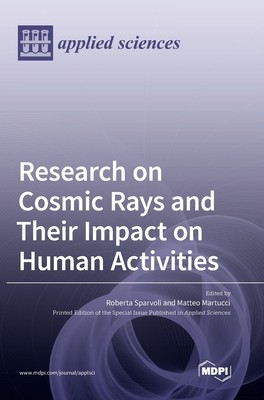
- We will send in 10–14 business days.
- Publisher: MDPI AG
- ISBN-10: 3036538577
- ISBN-13: 9783036538570
- Format: 17 x 24.4 x 1.3 cm, hardcover
- Language: English
- SAVE -10% with code: EXTRA
Research on Cosmic Rays and Their Impact on Human Activities (e-book) (used book) | bookbook.eu
Reviews
Description
The galactic cosmic-ray spectrum extends over 14 orders of magnitudes in energy and about 12 orders of magnitude in intensity, and it can be studied using two different methods: via the "direct detection" of the primary cosmic rays in space or at high altitude and via the "indirect detection" of secondary particles, namely the extensive air showers produced by a primary cosmic-ray particle impinging the atmosphere. In this Special Issue, both direct and indirect measurements are presented via from various experiments. Emphasis is placed on low-energy electrons and protons that are detected in flight as well as during geomagnetic storms. As for indirect detection, the muon flux determination and modulation at ground level are described in great detail.
Some of the most interesting results are hereby presented, and a couple of new techniques in cosmic-ray detection are reported.
EXTRA 10 % discount with code: EXTRA
The promotion ends in 10d.07:39:09
The discount code is valid when purchasing from 10 €. Discounts do not stack.
- Publisher: MDPI AG
- ISBN-10: 3036538577
- ISBN-13: 9783036538570
- Format: 17 x 24.4 x 1.3 cm, hardcover
- Language: English English
The galactic cosmic-ray spectrum extends over 14 orders of magnitudes in energy and about 12 orders of magnitude in intensity, and it can be studied using two different methods: via the "direct detection" of the primary cosmic rays in space or at high altitude and via the "indirect detection" of secondary particles, namely the extensive air showers produced by a primary cosmic-ray particle impinging the atmosphere. In this Special Issue, both direct and indirect measurements are presented via from various experiments. Emphasis is placed on low-energy electrons and protons that are detected in flight as well as during geomagnetic storms. As for indirect detection, the muon flux determination and modulation at ground level are described in great detail.
Some of the most interesting results are hereby presented, and a couple of new techniques in cosmic-ray detection are reported.


Reviews